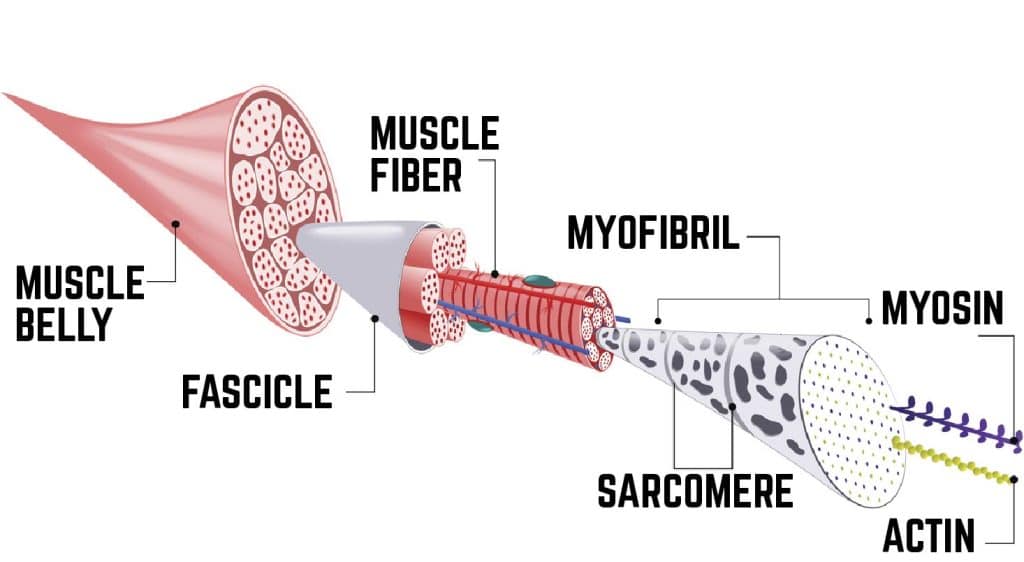Blog
Daily Exercise for a Stronger You: Building Muscles and Enhancing Endurance
The Science Behind Muscle Growth

Understanding the science behind muscle growth is crucial for maximizing the benefits of daily exercise. When we engage in resistance training exercises like weightlifting or bodyweight exercises, we intentionally subject our muscles to controlled stress and resistance. This stress serves as a stimulus for our muscle fibers, initiating a series of physiological responses that ultimately result in muscle repair, growth, and adaptation. One of the key processes involved in muscle growth is hypertrophy, where individual muscle fibers increase in size and number, leading to stronger, denser, and more resilient muscles.
During resistance training, microscopic damage occurs to the muscle fibers. This damage, known as microtears, activates our body’s repair mechanism. The damaged muscle fibers trigger the release of signaling molecules, such as growth factors and hormones like insulin-like growth factor (IGF-1) and testosterone. These molecules promote the recruitment of satellite cells, which are responsible for muscle repair and growth.
As the damaged muscle fibers repair themselves, they become stronger and thicker, adapting to better handle the stress they were exposed to during exercise. This process is known as myofibrillar hypertrophy, where the number and size of myofibrils within the muscle fibers increase. Additionally, there can be an increase in sarcoplasmic hypertrophy, which refers to an increase in the fluid-filled sarcoplasm within the muscle cells.
To optimize muscle growth, it is important to incorporate progressive overload into your strength training program. Progressive overload involves gradually increasing the demands placed on your muscles over time. This can be achieved by progressively increasing the weight, repetitions, or sets of your exercises. By challenging your muscles beyond their current capacity, you stimulate further adaptation and promote continuous growth.
It is also important to provide your muscles with adequate rest and recovery to allow for optimal growth. During rest periods, the body repairs the damaged muscle fibers, synthesizes new proteins, and replenishes energy stores. Proper nutrition, including an adequate intake of protein, is essential to support muscle repair and growth. Consuming a balanced diet that includes lean protein sources, whole grains, fruits, and vegetables provides the necessary nutrients for muscle recovery and growth.
Designing an effective strength training program involves selecting exercises that target specific muscle groups and incorporating a variety of movements to ensure balanced development. It is recommended to work different muscle groups on different days to allow for sufficient recovery time. Additionally, adjusting the intensity, volume, and frequency of your workouts can help stimulate muscle growth and prevent stagnation.
By understanding the science behind muscle growth and incorporating the principles of progressive overload and proper recovery, you can maximize the benefits of daily exercise and achieve optimal muscle development. So, embrace the challenge, push your limits, and witness your muscles transform into a stronger and more resilient powerhouse.
Strength Training: Building Muscles for a Strong Foundation

Strength training forms the foundation for building muscles and achieving a stronger physique. It involves engaging in exercises that specifically target different muscle groups, such as squats, deadlifts, and bench presses, to effectively challenge and stimulate muscle growth. The benefits of strength training go beyond just aesthetics. It also plays a crucial role in improving bone density, joint stability, and overall functional capacity.
One of the primary benefits of strength training is the increase in muscle size and strength. Through consistent and progressive resistance training, our muscles adapt and become stronger. This process, known as hypertrophy, involves the growth and thickening of muscle fibers, leading to improved strength and power. Strength training not only enhances our physical performance but also boosts our metabolism, allowing us to burn more calories even at rest.
Contrary to common misconceptions, strength training is not just for bodybuilders or those aiming to become bulky. It is a versatile form of exercise that can be tailored to suit individual goals and preferences. Whether you aim to build lean muscles, tone your body, or improve functional strength, strength training can be adapted to meet your specific needs.
Proper technique and progression are key aspects of effective strength training. It is important to learn the correct form and execute exercises safely to minimize the risk of injury and maximize the benefits. Gradually increasing the intensity, weight, or resistance over time is essential for continued muscle growth and progress. With guidance from a qualified fitness professional, you can develop a safe and effective strength training program that aligns with your goals and abilities.
Incorporating strength training into your daily exercise routine not only enhances your physical appearance but also improves your overall health and well-being. Strong muscles support good posture, reduce the risk of injury, and promote better joint health. Additionally, strength training can have a positive impact on mental health by boosting self-confidence and promoting a sense of accomplishment.
So, whether you’re a beginner or an experienced gym-goer, consider adding strength training to your fitness regimen. Enjoy the journey of challenging your muscles, witnessing their growth, and experiencing the numerous benefits that come with building a stronger foundation. Remember, consistency, proper technique, and gradual progression are key. With dedication and perseverance, you can build a stronger, more resilient body that will support you in all aspects of life.
Endurance Training: Enhancing Stamina and Resilience

Endurance training is a key aspect of daily exercise that can significantly enhance stamina and resilience. This form of training, also known as cardiovascular or aerobic exercise, focuses on improving the efficiency of our cardiovascular system, increasing lung capacity, and enhancing our body’s ability to sustain prolonged physical activity. Engaging in activities such as running, cycling, swimming, or high-intensity interval training (HIIT) can have a profound impact on our aerobic fitness and endurance levels.
One of the primary benefits of endurance training is the improvement in cardiovascular health. Regular aerobic exercise strengthens the heart muscle, enabling it to pump blood more efficiently and effectively throughout the body. This increased efficiency translates into improved oxygen delivery to the working muscles, enhancing their ability to generate energy and endure physical exertion for longer periods.
Endurance training also plays a crucial role in increasing lung capacity. Through consistent aerobic exercise, the lungs adapt to meet the demands of increased oxygen intake during exercise. This adaptation results in improved oxygen uptake, allowing the body to utilize oxygen more effectively during physical activity. As a result, individuals who engage in regular endurance training experience reduced breathlessness and increased tolerance for sustained exercise.
Enhancing endurance not only improves physical performance but also promotes overall resilience. By challenging the body’s limits and gradually increasing the intensity and duration of workouts, endurance training teaches us to push through discomfort and overcome obstacles. This mental fortitude gained through endurance training can extend beyond the realm of exercise, helping us tackle challenges in other areas of life with greater resilience and determination.
To optimize endurance performance, it is essential to consider factors beyond exercise alone. Proper nutrition plays a critical role in fueling and replenishing the body during endurance training. Consuming a well-balanced diet that includes adequate carbohydrates, proteins, and healthy fats provides the necessary energy and nutrients for optimal performance and recovery. Additionally, ensuring sufficient rest and recovery is crucial for preventing overtraining and maximizing the benefits of endurance training. Scheduling regular rest days and incorporating strategies such as foam rolling, stretching, and adequate sleep can help maintain the body’s resilience and reduce the risk of injuries.
Incorporating endurance training into your daily exercise routine can have a transformative impact on your overall fitness and well-being. As you gradually increase your endurance, you will notice improvements in your ability to sustain physical activity, increased energy levels, and enhanced mental resilience. So, whether you choose to hit the pavement for a run, hop on a bike, dive into the pool, or embrace high-intensity interval training, endurance training will unlock a whole new level of stamina and resilience within you. Get ready to conquer new challenges and embrace the rewards of a strong and enduring body.
Taking Your Fitness to the Next Level: Incorporating Variety and Progression
To maintain continuous progress and prevent fitness plateaus, it’s crucial to incorporate variety and progression into your daily exercise routine. Sticking to the same workout routine week after week can lead to diminished results and boredom. By incorporating different types of exercises into your regimen, such as strength training, endurance training, and flexibility exercises, you can engage different muscle groups and challenge your body in new ways. This not only keeps your workouts interesting but also helps target different aspects of fitness, promoting overall development.
In addition to incorporating variety, progression is key to improving your fitness level. Gradually increasing the intensity, duration, or resistance of your workouts allows for progressive overload, a fundamental principle in muscle growth and endurance enhancement. This means challenging your body beyond its current capabilities to stimulate adaptation and continuous improvement. For strength training, you can increase the weight or repetitions over time. In endurance training, you can gradually increase the duration or intensity of your cardio workouts. And for flexibility exercises, you can work towards more advanced poses or stretches.
To incorporate variety and progression effectively, it’s essential to have a well-rounded exercise routine that includes different types of exercises and targets various muscle groups. You can try incorporating interval training, circuit training, or incorporating new fitness classes into your schedule. This not only keeps your workouts interesting but also challenges your body in different ways, preventing adaptation and maximizing results.
Monitoring and tracking your progress is crucial to ensure that you are consistently pushing your limits and making advancements. Keep a workout journal or use fitness apps that allow you to record your exercises, sets, repetitions, and weights. This way, you can easily track your progress and adjust your workouts accordingly. Set specific and achievable goals for yourself, whether it’s lifting a certain weight, running a longer distance, or mastering a new exercise. Celebrate your milestones and use them as motivation to continue progressing on your fitness journey.
Variety and progression are key elements in elevating your fitness level and preventing plateaus. By incorporating different exercises, challenging your body with increasing intensity, and setting clear goals, you can continue to push your limits and achieve continuous progress. So, embrace variety, strive for progression, and watch yourself soar to new heights of strength and endurance. Your fitness journey is a constant evolution, and with every workout, you’re taking your fitness to the next level.
Daily Exercise for Building Muscles and Boosting Endurance
Daily exercise holds the key to building stronger muscles and enhancing endurance, transforming you into a fitter and more resilient version of yourself. By understanding the science behind muscle growth, engaging in targeted strength training, incorporating endurance training, and embracing variety and progression, you can take your fitness journey to new heights. So, lace up your sneakers, embrace the power of daily exercise, and embark on a path towards a stronger, more energized, and enduring you. The road to a stronger you starts today!


